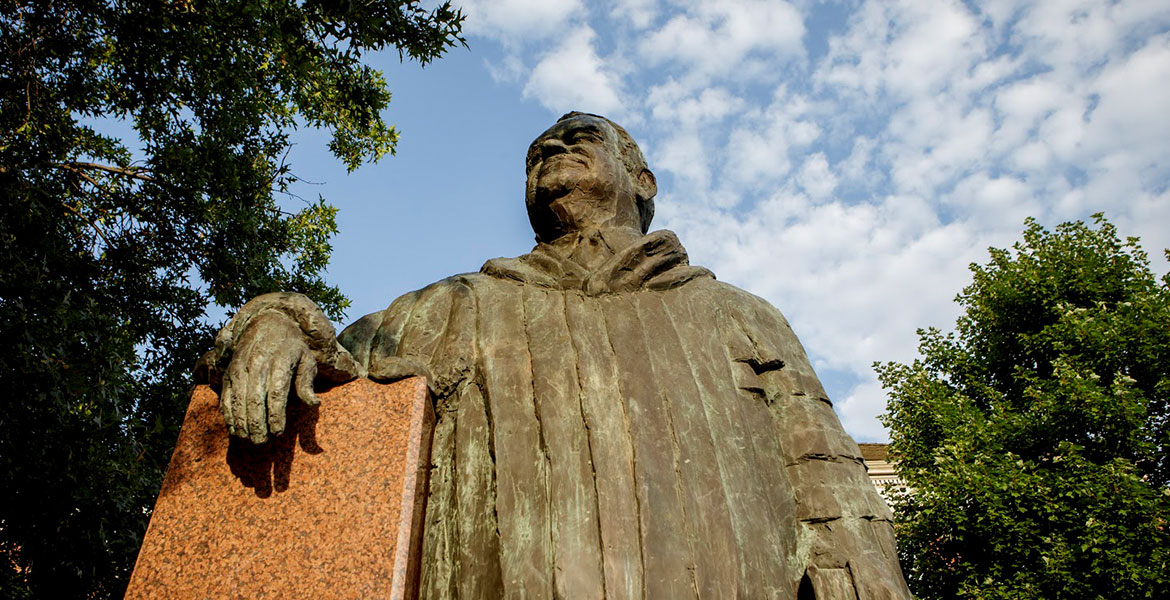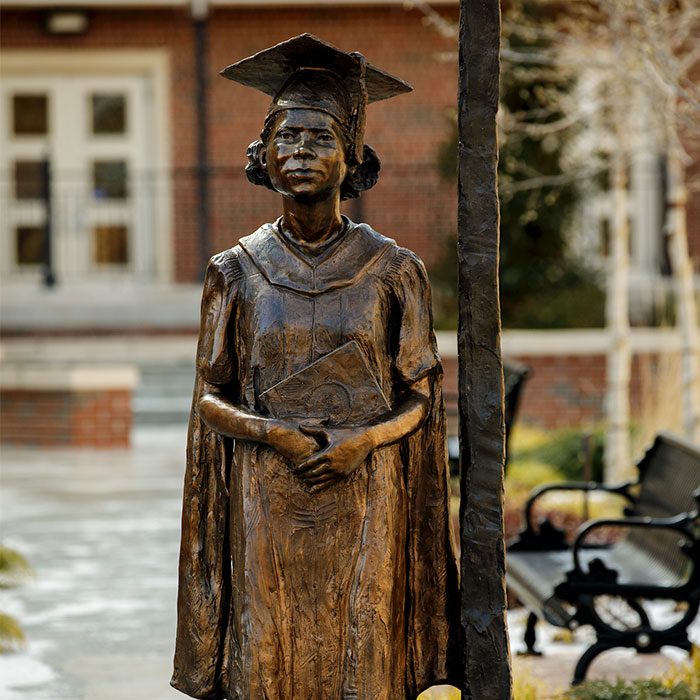
Profound Messages
Wednesday, May 1, 2019
Art honoring individual legacies keeps their memories alive
There are individuals who shape the course of lives, and there are others who change the course of history. In an effort to preserve their legacy, to keep their contributions from becoming buried under the weight of passing time and shifts of culture, Oklahoma State University has memorialized two such individuals: Nancy Randolph Davis and Henry Bennett.
Oklahoma State University dedicated a new life-size statue of Davis in January, honoring her as its first African-American student. The statue represents Davis in her graduation cap and gown, stepping over a threshold. It memorializes her courage when in 1949, she crossed racial barriers and went against a state law to enroll at a then all-white Oklahoma A&M. Her bravery became the symbol that education is an opportunity for all. She created a pathway and opportunity for all who followed her.
“For Oklahoma State, this sculpture is monumental and transformative because the message this sends is truly profound,” said Dr. Jason F. Kirksey, vice president for the Division of Institutional Diversity and OSU chief diversity officer. “It makes a statement about who we were and where we came from, but more importantly, who we aspire to be.”

For thousands of years, artists have sculpted and cast figures of people in metal and stone to honor them. While the history of memorial art is filled with examples of heroic military figures, it is also expressed in quiet art that recognizes down-to-earth leaders and pioneers. Oklahoma State has so far honored only two individuals with statues cast in their likeness. The newest is of Davis, located on the courtyard of the College of Human Sciences, while the other is of former OSU President Henry Bennett, whose statue stands east of Whitehurst Hall.
Bennett was Oklahoma A&M College’s president from 1928 until 1951 and is probably best remembered for his 25-five-year master plan for campus development, which included the distinctive Georgian design for many of OSU’s buildings, including Edmon Low Library and its surrounding grounds. That’s why Bennett’s statue faces the library’s south lawn, quietly watching thousands of students. The 9-foot, 8,500-pound sculpture depicting Bennett in academic regalia, a gift of the OSU class of 1940, was cast by Oklahoma artist Bill Peterson and dedicated in 1990 during the university’s centennial celebration.
Along with the Bennett Chapel, the statue stands as a memorial to Bennett who, with his wife, Vera, was killed in a plane crash in Iran in 1951 while he was serving as the first administrator of President Harry S. Truman’s Point Four Program to assist developing nations. The program later became the U.S. Agency for International Development (USAID).
Monumental sculpture has a vexed history, but the best examples are more often down to earth, recognizing individual accomplishment and acknowledging our collective shortcomings. For OSU associate professor of art history Dr. Louise Siddons, art like the Davis sculpture not only celebrates the individual, but also the individual’s and society’s shared experiences, both positive and negative.
“(In the United States) there's not the kind of cult of personality that led people like Lenin or Stalin to erect statues of themselves right and left,” said Siddons. “Honoring someone for having a groundbreaking life and being willing to stand up and be put in the position of hero is, I think, a very American thing.”
There are pioneers and visionaries who must not be forgotten. They set a standard for what is possible if someone is committed to something greater than themselves. A statue is more than cast bronze; it’s a signpost, a talisman.
“Young people coming to campus for the first time are exposed to diverse communities in more ways than they’ve ever been before, and they struggle to understand how they fit into American history and how they fit into the OSU campus,” Siddons said. “So, it’s vital for us as an institution to put up a statue that says this is our aspiration.”
By honoring Davis for bravely standing up for her right to an equal education, OSU is recognizing her role in opening the door to integration, as well as to the struggle of African-American college students who had been denied opportunity by that same institution. For Kirksey, the Davis sculpture provides a message of optimism and transformation at OSU.
“That's why it’s important to understand history, because that was real (segregation and racism),” Kirksey said. “It was the nature of the times, but it doesn't make it right. We have to understand that and reconcile that with where we are today, because we don't just get to bring the good stuff forward.”
Over the past decade, OSU has emerged as a recognized national leader and a role model for its commitment to creating a culture of inclusion. The full circle of OSU’s journey is reflected in these two sculptures, and their existence signifies an even brighter future.
